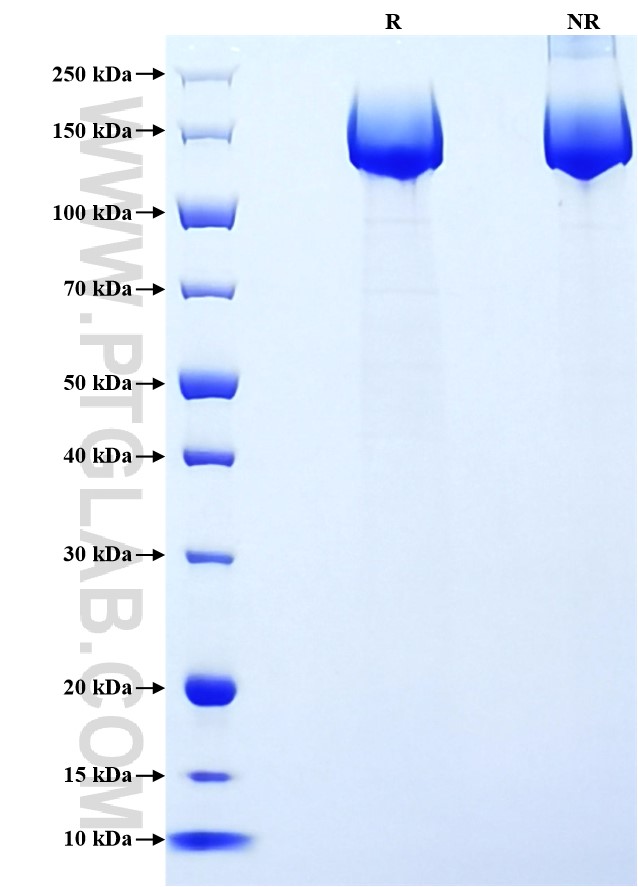Recombinant Human L1CAM protein (Myc Tag, His Tag)
种属
Human
纯度
>90 %, SDS-PAGE
标签
Myc Tag, His Tag
生物活性
未测试
验证数据展示
产品信息
| 纯度 | >90 %, SDS-PAGE |
| 内毒素 | <0.1 EU/μg protein, LAL method |
| 生物活性 |
Not tested |
| 来源 | HEK293-derived Human L1CAM protein Ile20-Glu1120 (Accession# P32004-1) with a Myc tag and a His tag at the C-terminus. |
| 基因ID | 3897 |
| 蛋白编号 | P32004-1 |
| 预测分子量 | 128.2 kDa |
| SDS-PAGE | 120-200 kDa, reducing (R) conditions |
| 组分 | Lyophilized from 0.22 μm filtered solution in PBS, pH 7.4. Normally 5% trehalose and 5% mannitol are added as protectants before lyophilization. |
| 复溶 | Briefly centrifuge the tube before opening. Reconstitute at 0.1-0.5 mg/mL in sterile water. |
| 储存条件 |
It is recommended that the protein be aliquoted for optimal storage. Avoid repeated freeze-thaw cycles.
|
| 运输条件 | The product is shipped at ambient temperature. Upon receipt, store it immediately at the recommended temperature. |
背景信息
L1CAM, also known as NCAM-L1 or CD171, is a cell adhesion molecule of the immunoglobulin superfamily. It is a 200-220 kDa transmembrane glycoprotein composed of six Ig-like domains and five fibronectin type III repeats followed by a transmembrane region and a highly conserved cytoplasmic tail. L1CAM is primarily expressed in the nervous system and is involved in neuron-neuron adhesion, neurite fasciculation, outgrowth of neurites, cerebellar granule cell migration, neurite outgrowth on Schwann cells and interactions among epithelial cells of intestinal crypts. L1CAM is overexpressed in many human cancers and is often associated with bad prognosis.
参考文献:
1. M Moos. et al. (1988) Nature. 334(6184):701-3. 2. S Kenwrick. et al. (2000) Hum Mol Genet. 9(6):879-86. 3. Helena Kiefel. et al. (2012) Cell Adh Migr. 6(4):374-84. 4. Timur R Samatov. et al. (2016) Prog Histochem Cytochem. 51(2):25-32. 5. Peter Altevogt. et al. (2016) Int J Cancer. 138(7):1565-76.


